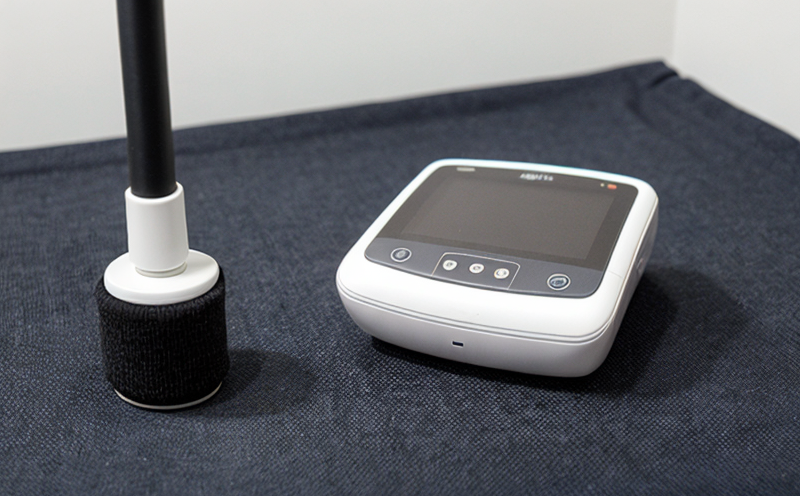Bending resistance testing of wearable conductive fibres
The bending resistance testing of wearable conductive fibres is a critical process in ensuring the durability and reliability of smart textiles, particularly those used in advanced electronics integration. Conductive fibres are often embedded in textile structures to enable features such as wireless communication, energy harvesting, or bio-sensing capabilities. These fibres must withstand repeated bending without compromising their electrical conductivity and structural integrity.
The testing of these fibres involves subjecting them to controlled mechanical stress to simulate real-world conditions they will experience during wear and use. This ensures that the textiles maintain their functionality over time, which is essential for applications like smart clothing or medical devices. The test can be conducted on individual fibres or integrated into a larger textile structure.
The methodology typically involves precise control of bending angles and cycles to simulate the conditions under which the fibre will operate in its intended application. For instance, in wearable electronics, the bending resistance is crucial for ensuring that the conductive fibres remain effective even after thousands of wear cycles. The testing apparatus used can vary from simple mechanical devices to sophisticated automated systems capable of replicating complex bending scenarios.
The acceptance criteria for these tests are stringent and are based on international standards such as ISO 178:2019, which provides guidelines for the tensile testing of plastics. For bending resistance, the test results should demonstrate that the conductive fibres maintain a minimum percentage of their initial electrical conductivity after specified bending cycles and angles.
- Bending at an angle of 30 degrees for 10,000 cycles is common for initial testing to ensure basic durability.
- For more stringent applications, such as medical devices or high-performance electronics, the number of cycles and angles may be increased to simulate harsher conditions.
The importance of this test cannot be overstated. In wearable technology, where the integration of conductive fibres is increasingly becoming a standard feature, ensuring that these fibres do not degrade over time is paramount. This testing ensures that the textiles remain functional and safe for extended wear.
Scope and Methodology
The scope of bending resistance testing of wearable conductive fibres encompasses a range of parameters that need to be carefully controlled to ensure accurate results. The scope includes the following:
- Test Parameters: Bending angle, number of cycles, and duration.
- Specimen Preparation: Cleaning, drying, and conditioning the fibres before testing.
- Instrumentation: Use of bending testers that can apply consistent force and measure displacement accurately.
The methodology for conducting these tests involves several key steps. First, the conductive fibres are cleaned to remove any contaminants or residues that could affect the test results. Next, they are conditioned to ensure consistency in their mechanical properties. After preparation, the fibres are placed into a bending tester designed specifically for this type of testing.
The bending tester applies controlled forces and cycles through specified angles. The displacement is monitored continuously, allowing for real-time data collection. Once the test cycle is complete, the conductive fibres are inspected to determine if there has been any degradation in their electrical conductivity or structural integrity. If necessary, additional tests may be conducted to confirm the results.
The results of these tests are typically reported according to international standards such as ISO 178:2019 and ASTM D3654-09e1. These reports include detailed descriptions of the test parameters, specimen preparation, instrumentation used, and the observed changes in electrical conductivity and structural integrity.
Environmental and Sustainability Contributions
- Eco-friendly Materials: By ensuring that conductive fibres maintain their performance over time, this testing contributes to the sustainability of wearable technology. This reduces the need for frequent replacements, thereby extending the lifecycle of products.
- Resource Efficiency: Through accurate and reliable testing, resources are not wasted on developing products that fail prematurely due to substandard materials or manufacturing processes.
The bending resistance test plays a crucial role in promoting sustainability by ensuring that the textiles used in smart devices meet stringent durability standards. This reduces waste and encourages the use of eco-friendly materials, ultimately contributing to a more sustainable textile industry.
Use Cases and Application Examples
Bending resistance testing is essential for various applications where wearable conductive fibres are integrated into textiles. These include:
- Smart Clothing: Ensuring that the conductive fibres in smart clothing remain functional over time, enhancing user experience and satisfaction.
- Medical Devices: Maintaining the integrity of conductive fibres used in medical devices to ensure patient safety and effective treatment.
- Energy Harvesting: Guaranteeing that conductive fibres in energy harvesting textiles do not degrade, thereby maximizing efficiency and reducing environmental impact.
In each of these applications, the bending resistance test is a critical step in ensuring the longevity and reliability of the product. By conducting this test, manufacturers can ensure that their products meet or exceed industry standards, thereby gaining a competitive edge in the market.





